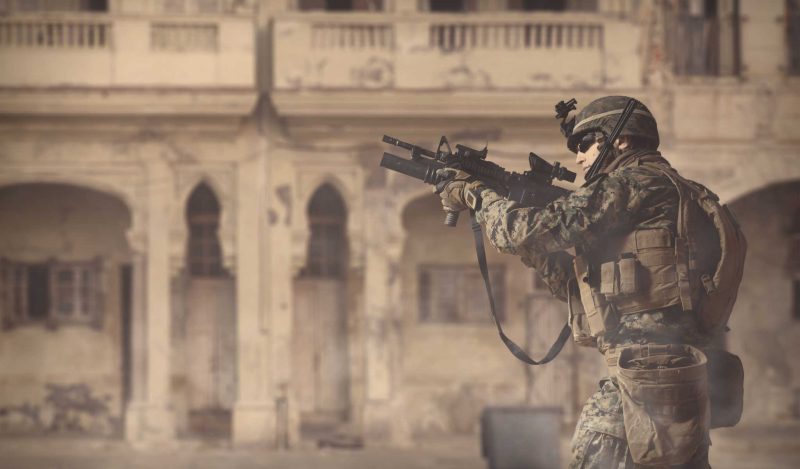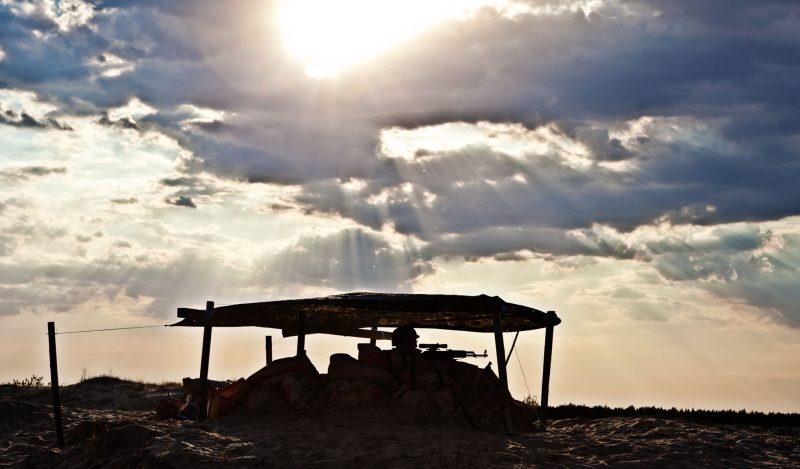At the time of the Iraq war, I was a senior UN official yet publicly critical of the drive to war before and during the war, including in the pages of the esteemed International Herald Tribune. (The demise of that paper was a sad loss to the world of high quality international journalism.)
The resort to emotional blackmail by the warmongers, where critics of the impending war were tarred for standing shoulder-to-shoulder with the Butcher of Baghdad, was instructive. Of course, very soon “We, the critics” were amply vindicated.
The whole episode left me with two conclusions. First, the resort to emotional arguments and moral blackmail generally implies that they have little reasoned argument and evidence to support their case and are deflecting to bluster instead. Second, whenever we are presented with excitable exclamation marks (Saddam Hussein already has weapons of mass destruction (WMD)! He can hit us with WMD in just 45 minutes! Coronavirus could be more cataclysmic than the Spanish flu! The sky is falling!), it is a very good idea to substitute sceptical question marks instead:
- Why would Saddam do that?
- Where is your evidence?
- What is your end goal?
- Are the proposed means proportionate to that goal?
- What will be the human and economic cost?
- How long will this take?
- Will you recognize success?
- What is your exit strategy?
- What are the checks against mission creep?
Instead of such healthy scepticism to force a dose of reality and calm down the agitated excitement, the coronavirus panic has also shown a remarkable triumph of the Henny Penny (or Chicken Little) tunnel vision. Thinking back to that as the coronavirus madness took hold of the world in 2020, I was surprised at how close the fit was to the Iraq war analogy once I thought the whole thing through. The lockdown, mask and vaccine mandates in particular revealed seven disturbing echoes of the 2003 Iraq War syndrome.
The first parallel is with respect to threat inflation. In the “Foreword” to the “dodgy dossier” of September 2002, UK Prime Minister Tony Blair wrote: Saddam Hussein’s “military planning allows for some of the WMD [weapons of mass destruction] to be ready within 45 minutes of an order to use them.” This turned out to be disinformation that was vital to rally the party, Parliament and the nation behind the decision to go to war.
British intelligence services had informed Blair in April 2002 (a year before the war) that Saddam Hussein had no nuclear weapons and any other WMD would be “very, very small.” The Chilcot Inquiry was told a decade later that Blair accepted this but converted to George W. Bush’s way of thinking after a subsequent visit to the US president’s ranch in Crawford, Texas.
Similarly, to gain public backing for the degree of state intrusion into peoples’ private lives and control over nations’ economic activities without precedent even in wartime, the immediacy, gravity and magnitude of the coronavirus threat had to be made apocalyptic.
SARS-CoV-2 is not remotely as lethal as the Spanish flu of 1918–19 that killed the fit and young as virulently as the elderly and infirm. It infected 500 million people (one third of the world’s population) and killed 50 million, equivalent to around 250 million dead today. Our health systems are infinitely better than a century ago. Yet authorities did not close down whole societies and economies in 1918. In other deadly pandemic episodes also we suffered but endured.
To overcome these hesitations of history and experience, the threat from SARS-CoV-2 had to be inflated beyond all previous calamities in order to panic countries into drastic action. This was successfully done by Neil Ferguson’s catastrophist Imperial College London model of 16 March 2020 that is by now widely discredited. It deserves to acquire a notoriety equivalent to Iraq’s dodgy dossier and Ferguson’s mortality estimates should be judged to be the equivalent of Blair’s 45 minutes to Saddam’s WMD.
The second echo comes from the thinness of evidence. The infamous Downing Street Memorandum of 23 July 2002 made it clear that the US administration was determined to go to war and military action was inevitable. For their part, however, British officials did not believe there was sufficient legal justification: there was no recent evidence of Iraqi complicity with international terrorism, Saddam’s WMD capability was less than that of Libya, North Korea or Iran, and he was not a threat to his neighbours. It was necessary to create the conditions that would make an invasion legal, hence “the intelligence and facts were being fixed around the policy” and the US “had already begun ‘spikes of activity’ to put pressure on the regime.”
With Covid-19, similarly, instead of evidence-based policy, many governments resorted to policy-based evidence to justify lockdowns, masks and vaccines.
The third similarity is in the denigration of critics who had the temerity to query the evidence. Those who questioned the lack of evidence to invade Iraq were demonized as apologists for the Butcher of Baghdad. Those who asked for evidence to justify the biggest expansion of state power in Western political history were shamed as wanting to kill granny. Most recently we learnt of how a unit of British intelligence kept tabs on the writings of journalists like Toby Young and Peter Hitchens because of their critical stance on government policies.
The fourth parallel is in the dismissal of collateral harm as exaggerated, speculative, without evidence, motivated, etc. Yet evidence continues to mount on the many different pathways through which the Grim Reaper claims his growing mass of victims from the panicked responses to Covid.
The fifth echo is in the lack of a clear exit strategy. Instead of a quick victory in Iraq followed by consolidated democratic regimes in a stable region and an orderly withdrawal, the US found itself stuck in a quagmire and eventually went back home an exhausted and vanquished conqueror. Almost all lockdown governments are now struggling with public justifications to declare victory and lift the lockdown. Modellers still want none of it and the apocalyptic warnings keep coming back, despite mounting evidence of a policy-invariant gradual decline in the spike in cases and deaths around the world. Covid is now endemic. The cognitive dissonance in Covid policy has been starkly evident in the continuation of the travel ban on unvaccinated visitors to the US well after authorities had been compelled to concede vaccines had no appreciable impact on infection and transmission.
Another resemblance is mission creep. One big reason for the self-created exit trap is that the original mission of flattening the curve so the health system could cope with a slowed spread of the virus, steadily morphed into the more ambitious but impossible mission of eliminating the virus. Or, to change metaphors, the goalposts didn’t just keep shifting. They were dug out and replanted in an entirely new paddock in an altogether different location.
Seventh and finally, like the US media in 2003, most mainstream media commentators across the democratic West abandoned critical inquisitiveness in 2020 to become cheerleaders for the “war on corona.” Except the censorship and suppression of dissenting voices seems to have been far, far worse in the last three years than was the case in 2003, with possibly illegal collusion between governments and Big Tech.
A shorter version of this article was first published in the Times of India on 6 June 2020.
Published under a Creative Commons Attribution 4.0 International License
For reprints, please set the canonical link back to the original Brownstone Institute Article and Author.









